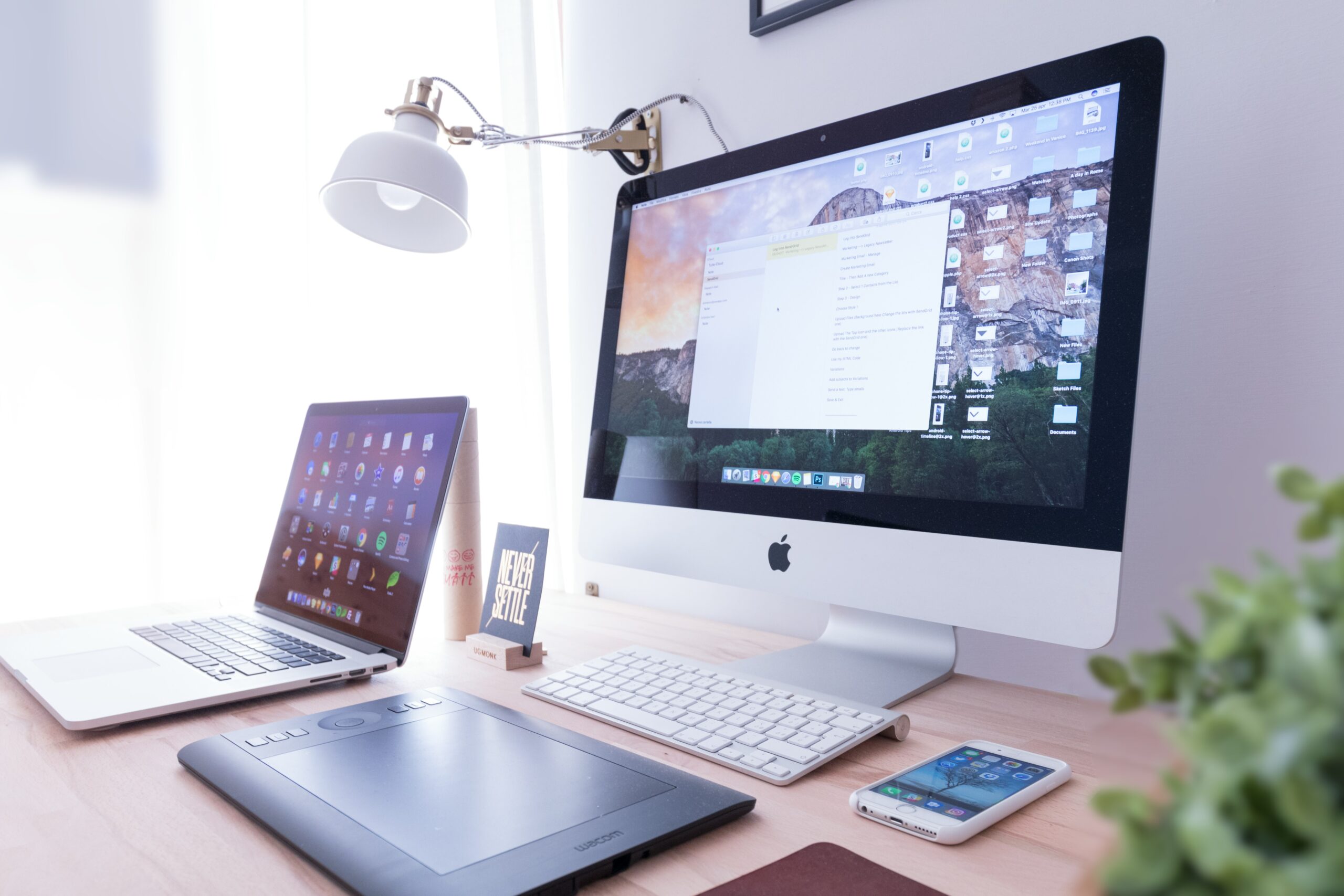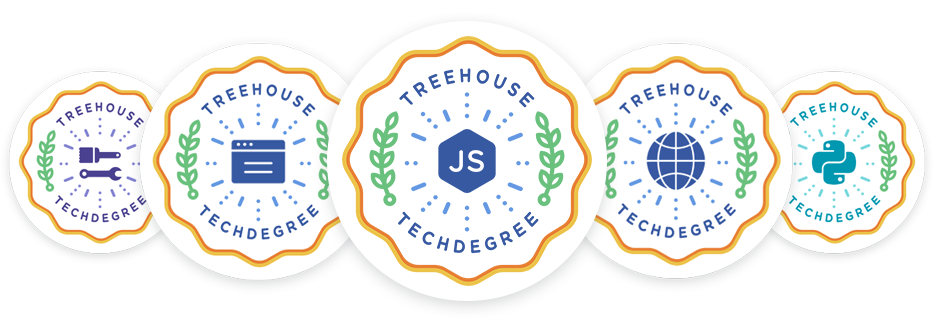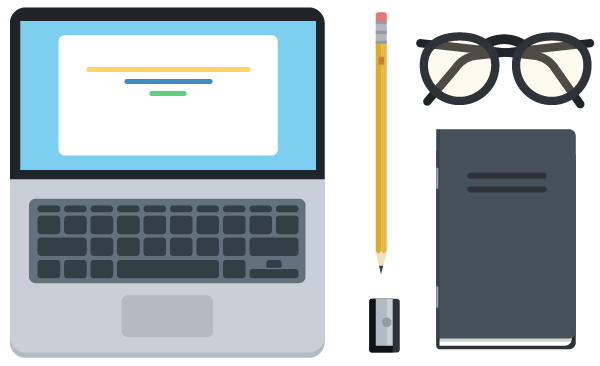Key Summary
To make a website look great on any device, use responsive web design: combine fluid grids that scale layouts proportionally, media queries to adjust styles at different screen widths, and flexible images and media that resize automatically. These techniques ensure your site works on smartphones, tablets, laptops, and large monitors without creating separate mobile or desktop versions.
Whether you’re just starting out or have been building websites for years, creating designs that look great on any device can feel tricky at first. That’s because responsive web design requires thinking differently about layout, content, and user experience.
Today, responsive design isn’t a trend—it’s a standard part of building websites. With more people accessing the web on smartphones and tablets than ever before, designing sites that adapt seamlessly to different screen sizes is essential.
This guide will help you understand the fundamentals of responsive design, from flexible layouts to modern CSS tools like Flexbox and Grid, so you can create websites that look and perform beautifully on any device.
Contents
- 1 What Is Responsive Design?
- 2 How Fluid Grids Create Adaptive Layouts
- 3 Using Media Queries to Adapt Layouts
- 4 Making Images and Media Flexible
- 5 Start Learning Responsive Design (and More) with Treehouse
- 6 Responsive Web Design FAQ
- 6.1 1. What’s the difference between responsive and adaptive design?
- 6.2 2. Do I still need to design for specific devices?
- 6.3 3. Are media queries still necessary with modern CSS?
- 6.4 4. How can I test if my site is responsive?
- 6.5 5. Is responsive design enough for accessibility?
- 6.6 6. Do I need to use a framework (like Bootstrap or Tailwind) to build responsive sites?
What Is Responsive Design?
Let’s dive in: the Treehouse Blog you’re reading is a responsive design. Try this—open this page on a desktop browser and slowly resize the window.

Notice how the navigation menu collapses into a hamburger icon and the content columns stack vertically on the mobile width.
Responsive web design isn’t a single technology—it’s a set of techniques and principles that work together to make websites adapt to different screen sizes, resolutions, and devices. This is why it can seem confusing at first, but once you understand the core ideas, it becomes much easier to implement.
So, why does responsive design matter? Today, people access the web on a wide range of devices: smartphones, tablets, laptops, desktops, and even large, high-resolution monitors. Users expect a smooth browsing experience regardless of the device they’re using. Creating separate mobile and desktop versions of a site is no longer practical—or necessary. Instead, responsive design allows a single website to adapt intelligently to all screen sizes.
The techniques behind responsive design include flexible layouts, fluid images, CSS media queries, and modern layout tools like Flexbox and Grid. Together, these allow your website to respond to the user’s environment, providing a better experience for everyone.
Previously, I mentioned that responsive web design is not a single piece of technology, but rather, a collection of techniques and ideas. Now that we have a better idea of the problem space we’re addressing, let’s take a look at each part of the solution.
Next, we’ll start with one of the core techniques of responsive design: fluid grids. You’ll learn how they help layouts adapt seamlessly to any screen size, along with other tools that make your websites flexible and user-friendly.
How Fluid Grids Create Adaptive Layouts
A key principle of responsive design is the fluid grid—a layout system where elements resize proportionally to the screen size instead of relying on fixed pixel widths. Fluid grids allow your content to adapt seamlessly across a wide variety of devices, from large desktops to tablets and smartphones.
Unlike traditional fixed-width layouts, which remain the same size regardless of screen width, fluid grids use relative units like percentages, em, or rem to define the size of columns and page elements. This way, when the viewport changes, all elements scale in relation to each other, keeping the layout balanced and readable.
Today, designers often use tools like Figma, Sketch, or browser-based prototypes to plan layouts, but the core principle remains the same: think in proportions rather than absolute pixels. For example, a column that takes up 30% of the container width will always occupy 30% of the screen, whether on a desktop monitor or a mobile device.
Fluid grids form the foundation of responsive design, but they aren’t enough on their own. When a screen becomes very narrow, complex layouts—like three-column designs—can break down. This is where media queries come in, letting you adjust the layout at specific breakpoints to ensure your site looks great on any device.
“With over 53,000 views on our responsive web design courses, Treehouse has helped thousands of learners understand and apply these critical web design techniques.”
Using Media Queries to Adapt Layouts
Once you have a fluid grid in place, the next step is using media queries to adjust your layout at specific breakpoints. Media queries let your CSS respond to the characteristics of the user’s device or browser, such as the viewport width, height, or orientation. This allows you to make your site look great on everything from small smartphones to large desktop monitors.
In modern web design, we follow a mobile-first approach. This means you start with styles for smaller screens and then use min-width media queries to enhance the layout as the screen gets larger. For example:
/* Base styles for mobile */
.content {
display: block;
}
/* Styles for tablets and up */
@media (min-width: 768px) {
.content {
display: flex;
}
}
Instead of targeting specific device widths, it’s best to create breakpoints based on your content. Look for points where your layout starts to look crowded or where text/images need more space. This approach is more flexible and future-proof than relying on a fixed list of device sizes.
Media queries can adjust a wide range of styles:
- Layouts (columns, menus, grids)
- Typography (font sizes, line heights)
- Visibility (show or hide elements)
- Images and media (sizes, aspect ratios)
By combining fluid grids with media queries, you can create a responsive website that adapts smoothly to any device or screen size.
Making Images and Media Flexible
So far, we’ve seen how fluid grids and media queries make layouts adapt to different screens. But there’s another piece of the puzzle: images and media. Without the right styles, an image or video can easily break a responsive layout by overflowing its container or appearing too small on high-resolution displays.
The simplest and most common solution for images is:
img {
max-width: 100%;
height: auto;
}
This ensures that an image will never be wider than its container, automatically shrinking to fit smaller screens while keeping its proportions.
For more advanced control, especially on high-resolution or retina displays, you can use the srcset and sizes attributes in HTML:
<img
src="photo-600.jpg"
srcset="photo-600.jpg 600w, photo-1200.jpg 1200w, photo-2000.jpg 2000w"
sizes="(max-width: 600px) 100vw, (max-width: 1200px) 50vw, 33vw"
alt="A responsive example image">
This tells the browser to automatically choose the right image file based on the screen size and resolution, saving bandwidth on small devices and delivering crisp images on larger ones.
The same principles apply to videos and other embedded media. Wrapping an <iframe> or <video> in a responsive container can help:
.responsive-video {
position: relative;
padding-bottom: 56.25%; /* 16:9 aspect ratio */
height: 0;
overflow: hidden;
}
.responsive-video iframe,
.responsive-video video {
position: absolute;
top: 0;
left: 0;
width: 100%;
height: 100%;
}
By making your images and media flexible, you ensure your content looks great and loads efficiently across all devices.
Start Learning Responsive Design (and More) with Treehouse
Now that you’ve seen the basics of responsive web design—fluid grids, media queries, and flexible media—you’re ready to start practicing these techniques in your own projects.
But this is just the beginning. At Treehouse, you’ll find in-depth courses that take you step by step through web design, front-end development, and beyond. Whether you’re looking to build your first website, improve your coding skills, or start a new career in tech, Treehouse has a learning path for you.
With Treehouse, you’ll get:
- Guided courses taught by industry experts
- Hands-on projects to practice what you’ve learned
- Access to the Treehouse community for support and collaboration
- Career-focused Techdegree programs to help you become job-ready
If you’re serious about starting your journey in tech, start your 7-day free trial today and take the next step toward building websites that look amazing on any device.
Responsive Web Design FAQ
1. What’s the difference between responsive and adaptive design?
Responsive design uses flexible layouts that automatically adjust to any screen size. Adaptive design, on the other hand, uses predefined layouts that switch at certain breakpoints. In general, responsive design is more fluid and future-proof, while adaptive design can give you more control at specific sizes.
2. Do I still need to design for specific devices?
Not really. Instead of targeting exact devices (like iPhone or Galaxy), it’s better to design based on content and breakpoints. Think about how your layout should change when space gets tight or extra wide, and let the content guide your breakpoints
3. Are media queries still necessary with modern CSS?
Yes—but you also have new tools! Media queries are still widely used for responsive design, but modern CSS features like clamp(), container queries, and flexbox/grid allow you to build more adaptive layouts with fewer breakpoints.
4. How can I test if my site is responsive?
The easiest way is to open your site in a desktop browser and resize the window. You can also use Chrome DevTools (or similar tools in other browsers) to simulate different device sizes. For real-world testing, check your site on multiple physical devices if possible.
5. Is responsive design enough for accessibility?
Not by itself. Responsive design makes your site usable across screen sizes, but accessibility also requires things like proper color contrast, keyboard navigation, semantic HTML, and support for screen readers. Good responsive design should always go hand-in-hand with accessibility best practices.
6. Do I need to use a framework (like Bootstrap or Tailwind) to build responsive sites?
Nope—it’s entirely possible with plain CSS. Frameworks can speed up development by providing pre-built responsive classes and layouts, but understanding the fundamentals of fluid grids, media queries, and flexible media will help you regardless of whether you use a framework.







